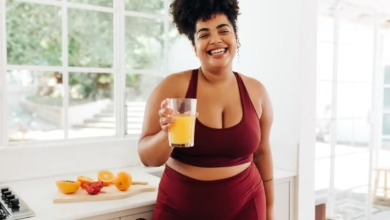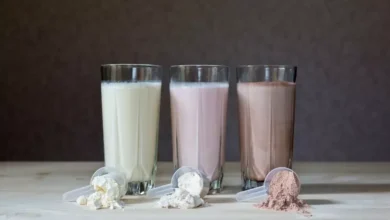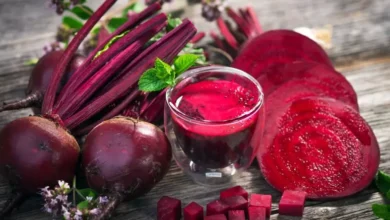How to Build a Balanced Plate: The Key to Portion Control
In a world of super-sized meals and endless food choices, understanding portion control and how to build a balanced plate is essential for maintaining a healthy lifestyle. Rather than focusing on restrictive diets or calorie counting, learning to structure your meals in a smart and satisfying way can help you nourish your body and avoid overeating.
Let’s explore how to build a healthy, balanced plate and why it’s one of the simplest yet most effective tools in nutrition.
Why Portion Control Matters
Portion control helps you:
- Prevent overeating and maintain a healthy weight
- Balance energy levels throughout the day
- Improve digestion and nutrient absorption
- Avoid blood sugar spikes and crashes
- Feel more satisfied and in control of your eating habits
You don’t need to measure every bite or weigh your food. A visual guide—like the balanced plate method—makes it simple and intuitive.
The Balanced Plate Method: A Visual Tool
A balanced plate includes a variety of nutrients in the right proportions to support health and satiety. Here’s a breakdown of how to fill your plate:
Half the Plate: Non-Starchy Vegetables
These are low in calories and high in fiber, vitamins, and minerals. Fill half your plate with colorful, nutrient-dense vegetables such as:
- Broccoli
- Leafy greens (spinach, kale, arugula)
- Bell peppers
- Carrots
- Zucchini
- Cauliflower
- Cucumbers
They add volume to your meals without adding excessive calories, making you feel full and satisfied.
One Quarter: Lean Protein
Protein is essential for muscle repair, metabolism, and satiety. Fill one-quarter of your plate with lean protein sources like:
- Grilled chicken breast
- Turkey
- Tofu or tempeh
- Eggs
- Fish (like salmon or cod)
- Lentils or beans
- Low-fat dairy (Greek yogurt, cottage cheese)
Vary your protein choices to get a range of nutrients and keep meals interesting.
One Quarter: Whole Grains or Complex Carbs
Healthy carbohydrates fuel your body and brain. They’re best when high in fiber and minimally processed. Fill one-quarter of your plate with:
- Brown rice
- Quinoa
- Sweet potatoes
- Whole wheat pasta
- Barley
- Oats
- Legumes (black beans, chickpeas)
Avoid refined grains like white bread or sugary cereals, which can lead to energy crashes and overeating.
Extras: Healthy Fats
Healthy fats support brain function and hormone production. Include small amounts of:
- Avocado
- Olive oil
- Nuts and seeds
- Nut butters
- Fatty fish (like salmon or sardines)
Fats are calorie-dense, so be mindful of portions—usually 1–2 tablespoons or a small handful is enough.
Beverage: Water First
Water is the best beverage to accompany a balanced meal. It aids digestion and keeps you hydrated without adding sugar or calories. Try infusing your water with lemon, cucumber, or berries for natural flavor.
How to Use Your Hands as Portion Guides
When you’re eating out or don’t have a plate, you can use your hands as a portion guide:
- Protein: Size of your palm (1 serving)
- Vegetables: Two cupped hands
- Carbs: One cupped hand
- Fats: Size of your thumb
This simple method helps you stay mindful of portions without needing scales or measuring cups.
Building Balanced Meals Throughout the Day
Here’s how a day of balanced meals might look:
Breakfast:
- Scrambled eggs with spinach and tomatoes
- Whole grain toast
- Half an avocado
- Herbal tea or water
Lunch:
- Grilled chicken salad with mixed greens, carrots, cucumbers, and olive oil vinaigrette
- Quinoa on the side
- A piece of fruit
Dinner:
- Baked salmon
- Roasted sweet potatoes
- Steamed broccoli
- Water with lemon
Snacks (Optional):
- Greek yogurt with nuts
- Apple slices with almond butter
- Carrot sticks with hummus
Common Portion Pitfalls to Avoid
- Oversized plates: Use a smaller plate to naturally reduce portions.
- Mindless eating: Avoid eating in front of the TV or while scrolling your phone.
- “Health halos”: Just because something is labeled healthy (like granola or smoothie bowls) doesn’t mean it’s low in calories.
- Restaurant portions: Consider splitting meals or boxing up half to take home.
Make It a Lifestyle
The balanced plate method isn’t a diet—it’s a practical lifestyle tool. It allows for flexibility, variety, and satisfaction, all while supporting your health goals. With a little practice, portion control becomes second nature, and you can enjoy your meals without guilt or obsession.
Eating well isn’t about perfection—it’s about creating habits that help you feel your best day after day. Start by building one balanced plate, and let that be the foundation for a more energized, nourished you.

Hello! My name is Alan Teixeira and I am passionate about helping people live healthier, more balanced lives. From mindful eating to daily habits that promote physical and mental well-being, I believe that small, consistent changes can lead to powerful transformations.
I created this blog to share practical tips, reliable information, and thoughtful insights that can inspire you to take better care of yourself—with balance, mindfulness, and positivity.
If you are looking to improve your health, nourish your body, and build a lighter, more fulfilling routine, you are in the right place. Welcome!





